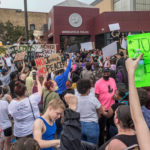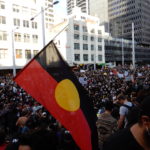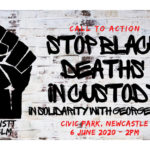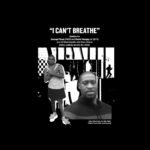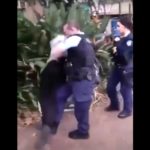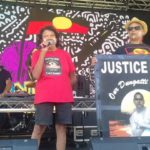A United NSW Demands an End to First Nations Custody Deaths and Police Brutality
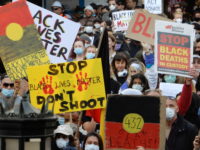
At 4.33 pm on Saturday 6 June, the 50,000 demonstrators gathered at Central’s Belmore Park knelt to mark the 433 First Nations deaths in custody since 1991. It was a solemn moment, as people from all racial backgrounds united in the call for an end to the prejudicial violence in the system.
The family of David Dungay Junior led the impressive procession of protesters as it made its way from Sydney Town Hall down Castlereagh Street.
Dungay, a young Dunghutti man, lost his life at Long Bay Gaol in late 2015, when five prison guards forcibly held him face down on a bed unable to breathe.
The local protests have been sparked by the 25 May killing of George Floyd in Minneapolis. Footage of a white police officer kneeling on the African American civilian’s neck, as he repeatedly cries, “I can’t breathe,” and loses consciousness have led to global protests.
In the state of NSW, the demonstrations were not limited to the capital city. Around 5,000 gathered in Newcastle’s Civic Park making clear that the racially biased brutality perpetrated by a policing and criminal justice system has to stop, while a further 5,000 said Black Lives Matter in Byron Bay.
Over the last week, many said that they hadn’t seen such an outpouring of sentiment in the Stop Aboriginal Deaths in Custody movement since the 1980s. And the mobilisers who’d been present at both times remarked that Saturday represented the most solid push for change ever seen.
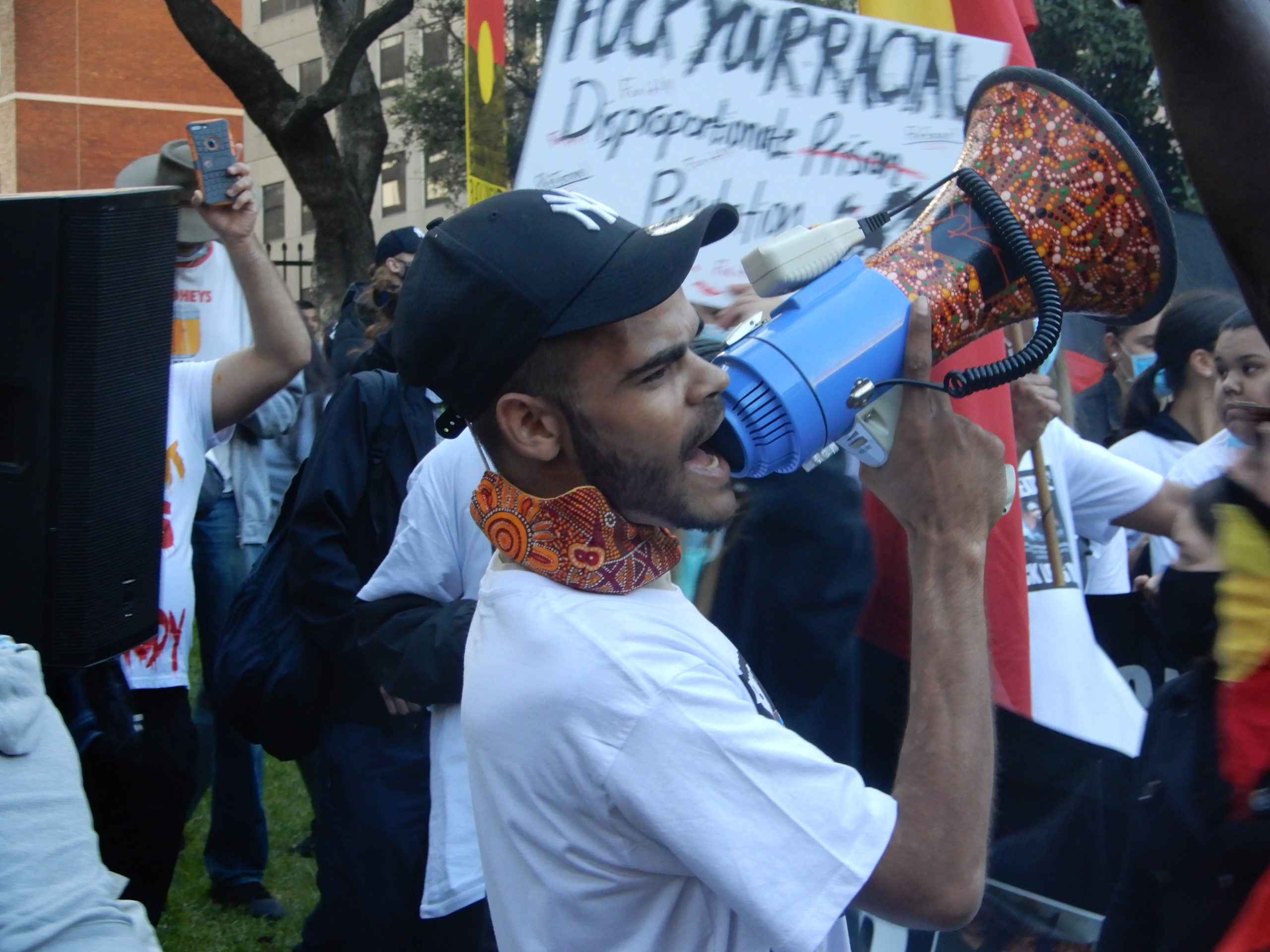
“I can’t breathe”
“We are here doing a march for Black Lives Matter and for David Dungay Junior,” said Paul Francis, Dungay’s nephew, as he led the rally at Town Hall steps. “As you can hear in the background, they’re shouting, ‘I can’t breathe’”.
“David Dungay Junior – here in our own backyard – tragically yelled that in 2015, the same way George Floyd did in the US,” he told Sydney Criminal Lawyers.
Dungay was just 26 years old when six guards stormed the cell he was occupying at the hospital ward in Long Bay Gaol. The prison officers then dragged him into another cell and held him face down in the prone position, as he repeatedly called out that he couldn’t breathe.
And just like George Floyd’s death, footage of David Dungay being killed was captured on video. Yet, on handing down his findings, the NSW coroner ruled that while the use of force led to Dungay’s death, no recommendation for any charges to be laid was made.
“We are uprising here in Sydney,” Francis said, as he stood before the crowd on Saturday afternoon. “We are focusing on the injustice for our people.”
Last minute reprieve
The Stop All Black Deaths in Custody rally was scheduled to commence at 3 pm on Saturday afternoon. But, by half two, the area before Sydney Town Hall steps was so crowded with protesters that the city closed down the new tram network to provide more room.
At that point in time, the rally was illegal, as on Friday, the NSW Police Force petitioned the state Supreme Court to prohibit the rally on the basis that it posed a safety risk due to the threat of COVID-19.
Many on social media posited that NSW police commissioner Mick Fuller was more concerned about a protest against police, than any virus.
And the NSW Supreme Court went on to rule early evening that the gathering of an expected 5,000 was a safety issue and therefore couldn’t go ahead.
However, about 20 minutes prior to the commencement of the 50,000 strong rally, NSW Greens MLC David Shoebridge appeared before the crowd and announced that a last minute appeal had been successful and the demonstration could legally go ahead.
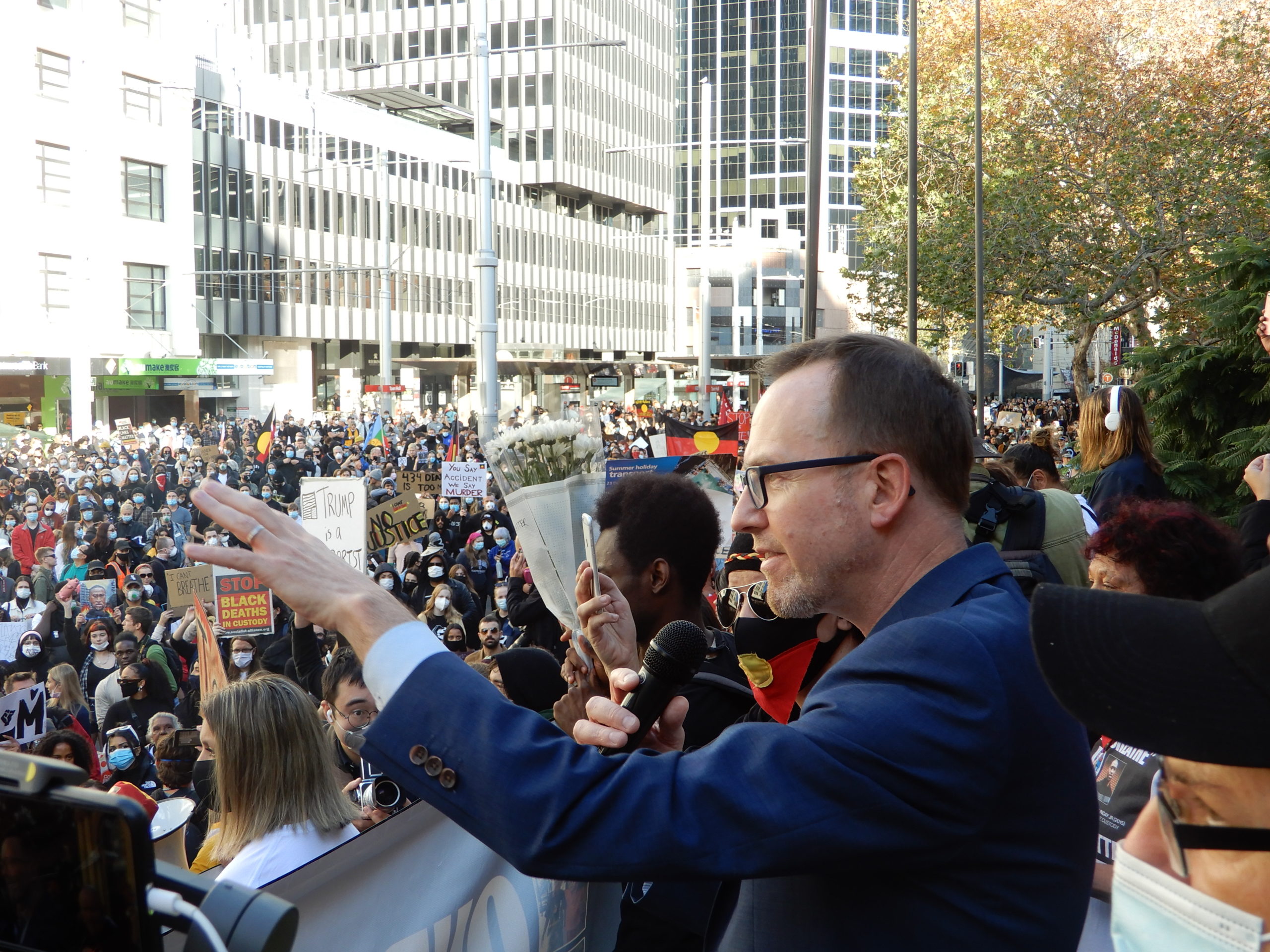
“I want you to say thank you to those brave organisers and elders that took the case,” the Greens justice spokesperson told the crowd. “And I want to say thank you to those lawyers who did it for nothing. They were up there arguing for us, because they believe too that black lives matter.”
The lawyers who successfully argued the case were Sydney barristers Stephen Lawrence and Felicity Graham.
End colonial violence
“Your brutality and your colonial violence continues. It is time you – the Australian people – put an end to it,” Wankamara elder Albert Hartnett said, after he’d announced that organisers had just learnt that another Aboriginal death in custody had occurred last Friday in WA.
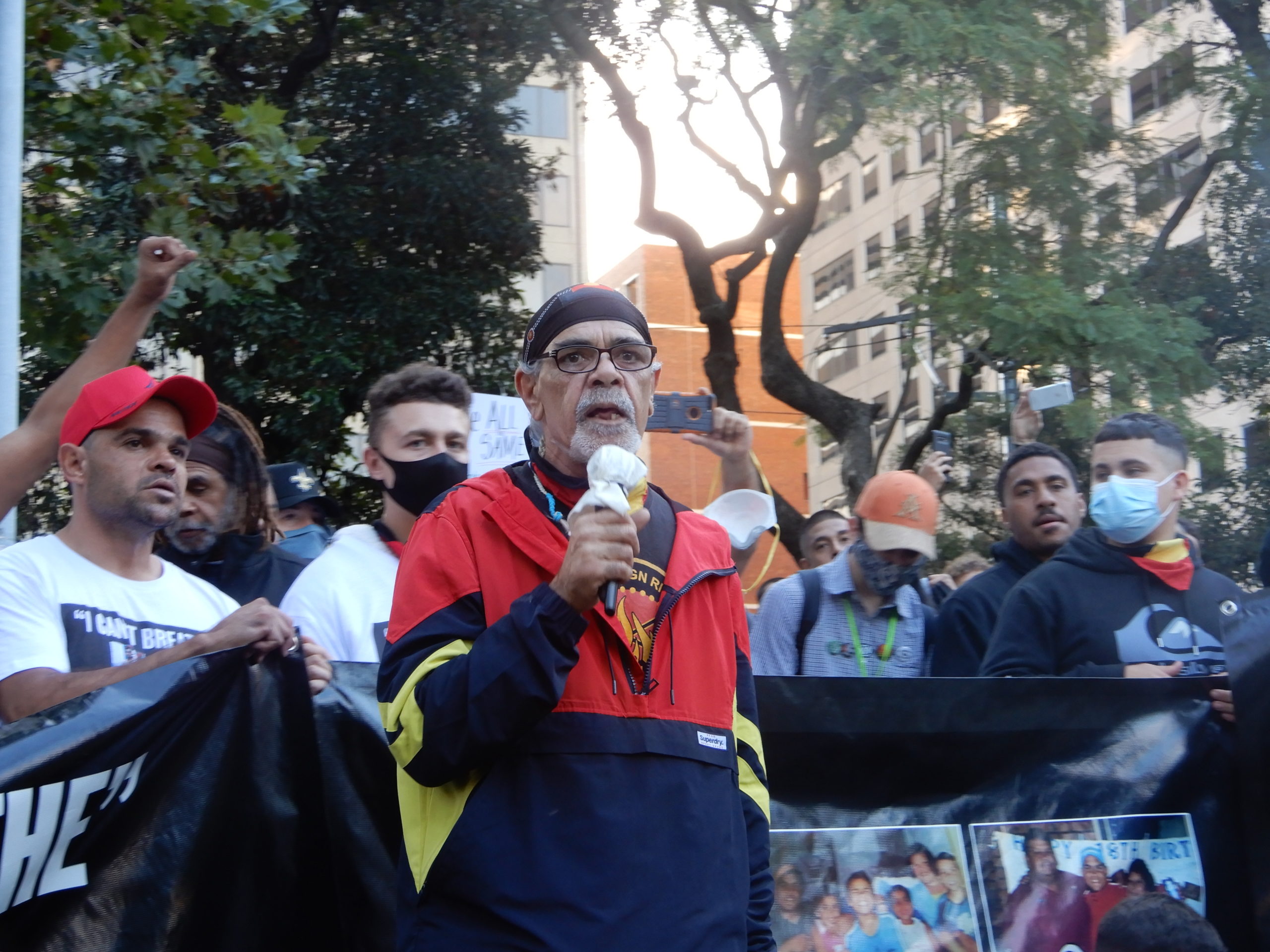
“The way you do that is you stand in solidarity with the families. You stand in solidarity with every Aboriginal nation in this country, because we all suffer from a death in custody,” he told those gathered at Belmore Park.
The fact that Australian policing and criminal justice systems are prejudiced against First Nations people is obvious when you look at the statistics. Since 1991, there have been at least 433 Aboriginal custody deaths, yet there has never been a single conviction of a police or prison officer in relation.
While custody figures for March this year reveal that 29 percent of the adult prisoner population in this country is made up of First Nations people, despite them making up less than 3 percent of the overall populace. And their numbers inside had increased by 5 percent since last December.
“We have all been brutally colonised by the violence and genocide of the colonial British regime,” Hartnett said, not long before the entire crowd knelt to honour those lives lost. “We need your help to dismantle this colonial system. Give us back our rights as First Nations people.”
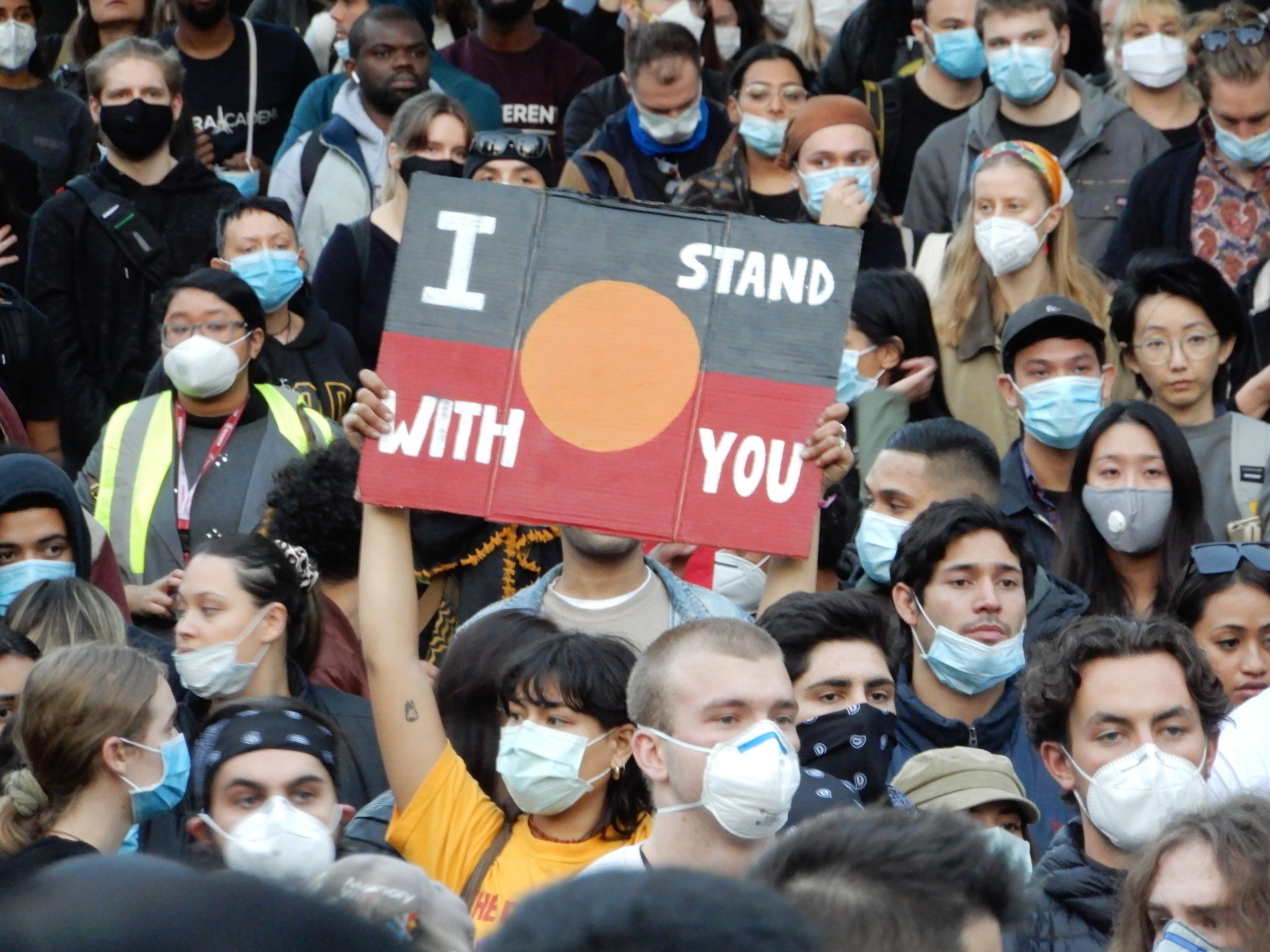
Against the tide
The Black Lives Matter protests that have swept the States over the last half month have been marked, in part, by violence. On the part of some protesters this has meant property violence, while on the part of some police officers it’s been violence towards people.
So, the organisers of the Stop All Black Deaths in Custody rally were extra vigilant against anything but a peaceful action taking place. And for those mobilising, the amount of care taken to guard against anything untoward was plain to see.
However, after most of the protesters had dispersed, NSW police officers decided to set upon a group of predominately young demonstrators and teargas them. While NSW police minister David Elliott announced on Sunday that he was going to ban protests for the rest of the pandemic.
And it would seem that both these supposed displays of strength might actually reveal weakness.
Officers unleashed the same brutality upon a few that a much greater number had been rallying against, while a government minister presented a media friendly excuse to attempt to silence a burgeoning movement for change.


